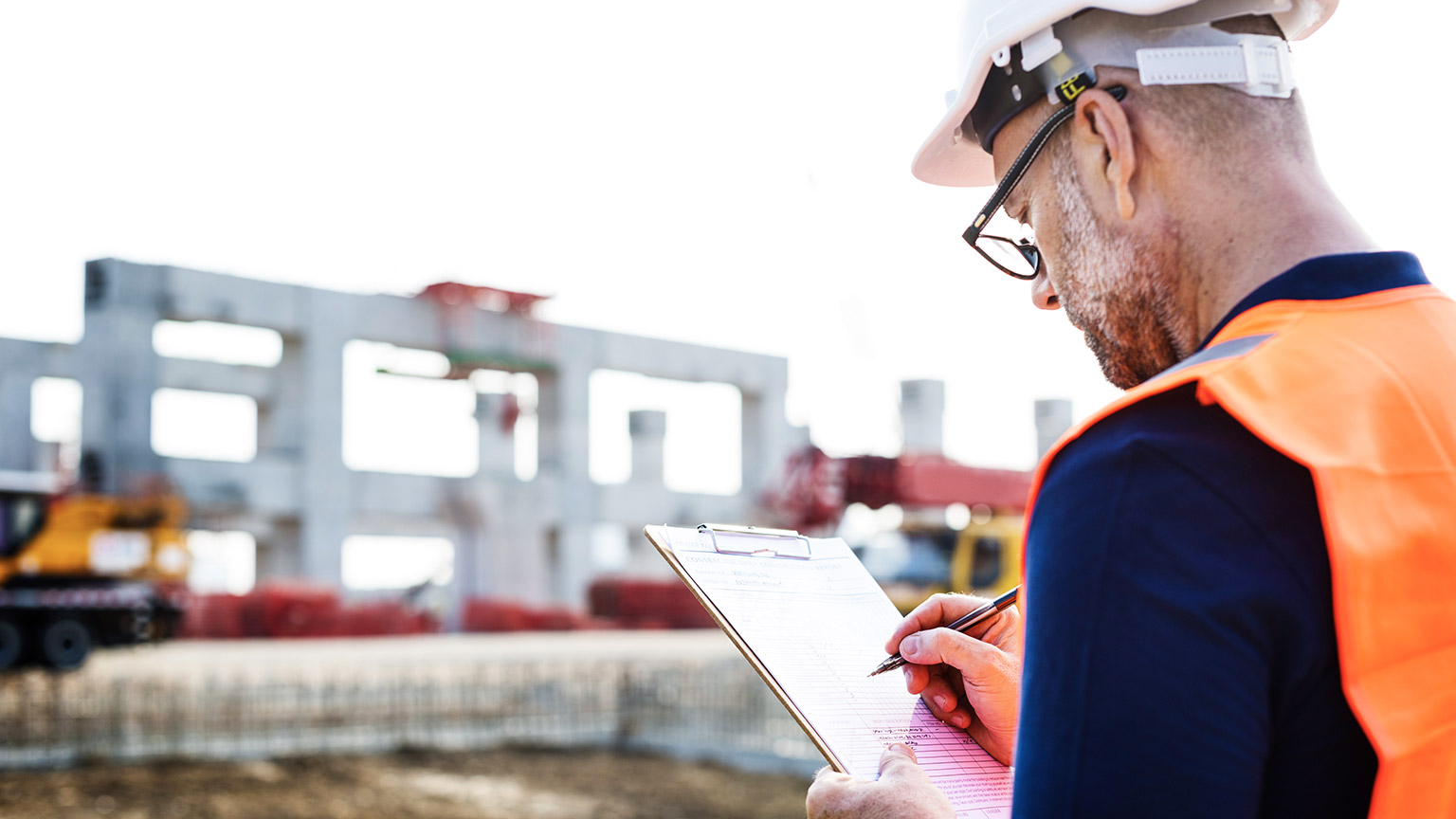To monitor your project’s workplace safety to check compliance with WHS Regulations and workplace safety requirements, you need to:
- Compare workplace safety plan and WHS legislation to current conditions of the workplace. This is to check if the workplace safety plan and legislative requirements are being followed or if there are issues that prevent compliance with workplace and legal requirements. Make sure to read and review the safety plan and legislation to know which areas you need to check on site.
- Track workplace incidents occurring. You should be regularly updated on the number of incidents, as well as severity of each incident. The actual frequency and intensity of harm inflicted should show if the safety plan is effective or workplace safety measures in place lack effectiveness.
- Use project or construction tracking and monitoring applications. These provide efficient ways of monitoring workplace safety, such as setting indicators and alerts when incidents at a certain number. These applications also help record and store workplace incident for evaluation and future referencing.
- Get feedback from workers and visitors. This can be as simple as asking those on site of what they think about the safety protocols in place. For a more formal approach, surveys and feedback forms can be provided to workers so that they can respond to concerns on workplace safety in detail. You can also conduct meetings and consultations so that you can see non-verbal cues that will describe their experience with hazards and their respective control measures.
Auditing workplace safety
Safety audits for the workplace are conducted to check the current status and effectiveness of the overall workplace safety plan. As with monitoring, it compares the current conditions on workplace health and safety found on site against the planned arrangements. Results of the audit will help in revising the safety plan to meet the requirements from government legislation and from the workplace. Even though an audit results in compliance with requirements, it serves as an opportunity also on how to improve on current conditions.
To carry out or assist the audit team safety audits, you should consider the following:
- Schedule regular audits. Audits should be done routinely to make sure that the project complies with legislation and workplace requirements consistently as the project commences. Depending on the areas or aspects you will audit, the schedule may differ. Nevertheless, you should at least set frequent audits at least monthly so that you can assess workplace safety and compliance, as well as revise and implement changes if needed.
- Focus on specific areas or aspects of workplace safety. You do not always need to conduct safety audits that encompass 100% of the project, as this will only make you lose time and resources if done regularly. You can pick out specific areas for you to check per audit, such as educational programs, control measures, emergency procedures or incident reporting.
- Set clear benchmarks for adequate compliance. Benchmarks and standards for safety compliance should be clearly defined. Make sure that everyone concerned with work health and safety is in agreement with what the benchmarks should be. You can use organisational benchmarks, industry standards (such as Australian and International Standards), as well as provisions found in WHS legislation.
- Conduct the safety audit. This is done differently depending on the benchmark agreed upon, areas to check and audit procedures. If needed, obtaining samples and testing materials and equipment should complement the safety audit, especially for control measures. You may also perform activities mentioned in monitoring workplace safety.
- Record your findings. This will serve as evidence and relevant information for the conclusion and result of the audit. You should take notes (either with a pen or paper or using mobile technology such as smartphones and tablets), supplementing them with other evidence such as images, audio recordings, videos, test results and survey summaries. Make sure that the evidence is truthful and objective to ensure information is accurate.
- Report the results. Make sure that information is easy to understand and interpret. You can provide tables, graphs and images to consolidate data in an organised manner, instead of only words that make the report lengthy. Also, do not forget to also report safety achievements and other good notes in the report to recognise workplace and legislative compliance
- Develop an action plan. The action plan should be based on gaps and other concerns found during the audit. These would be the areas of interest that you should give attention to so that these concerns can be addressed. Organise the order of the concerns based on the results of the audit and the urgency of the concern.
At the end of the module, in the Additional Resources, you can access a Site WHS Audit report template to see what information is generally covered during a WHS audit. The audit tool includes an evaluation of the educational program and current safety measures as well that can be done by consulting with workers and visitors.

Recording findings of safety audits
It is crucial that all relevant information and results regarding the safety audit must be documented properly. As mentioned previously, accurate information is very important so that appropriate action plans can be developed in a way that they address and resolve concerns on non-compliance.
To properly record findings, consider the following:
| Considerations | Detail |
|---|---|
| Organise data collected |
Make sure that you organise all the data and information gathered in a logical manner. Review your findings and provide labels per data or information so that you will know where to look when you need them. To make things more efficient, use computer programs to help you organise files and data easily. This also applies to media files such as images and videos. |
| Tables, graphs and diagrams | Use tables, graphs and diagrams instead of only words and paragraphs. This is especially true for numerical data and summary of information. This will present those data in an orderly manner. |
| Ensure accuracy of data and information | This will ensure that non-compliance will be addressed and remedied appropriately. Include all feedback gained from surveys and consultations, not just the positive ones just to say you have complied. Double check computations for analytical and statistical data as a single error may affect the final result greatly. If needed, verify data and information with the help of others. |
| Provide findings | Provide findings in multiple formats, meaning have a hardcopy and a softcopy of the report, as well as a presentation file for when reporting your findings to the relevant parties. |
Non-compliance with workplace safety
Non-compliance with workplace safety means that current control measures and other safety procedures are deemed not effective in achieving workplace safety or in managing the risks in the workplace based on either the legislative requirement, workplace requirement or both.
Some ways of identifying non-compliance include:
- Review of WHS legislation and organisational policies
- Site inspections
- Building inspections
- Safety audits
- Accidents, near-misses and other incidents occurred on site
Serious incidents at a worksite must be recorded and reported to the relevant authorities9.
Additionally, a register of injuries must be kept for workers to record workplace injuries or illnesses. The register of injuries may be kept in writing or be electronic (like on a computer). Having a register that all workers can access will help them raise any safety issues they have. It can also help you develop new safe work procedures.
There are penalties for failing to keep a register of injuries. You can access a standard template of an injury register here, published by SafeWork NSW.10
Recommending actions to address non-compliance
Once you have recorded your findings accurately and reviewed them, you should now consider on what actions will address non-compliances. Recommending the right action plan is crucial in order for you to now comply with requirements provided by your workplace, organisation and legislation. To be able to recommend actions necessary to address and resolve non-compliance, take the following into consideration:
| Consideration | Detail |
|---|---|
| Determine the goal or outcome | Although the main purpose is to address non-compliance, provide a more specific goal or purpose. For example, if findings in safety audit include non-compliance in training programs given to workers, you can set your goal as “Develop better training programs that will help workers carry out construction work safely and productively” as opposed to just saying “improve training programs”. As a guide you can use the SMART criteria (Specific, Measurable, Attainable, Relevant, Time-bound) to help you create your goal. |
| Provide the tasks needed to achieve compliance |
To do this, consult all parties relevant to the concern of non-compliance create a realistic list of tasks to be able to reach compliance. Consulting is also necessary so that they are aware of their roles and responsibilities in achieving compliance. It is important that the tasks are well-defined, by breaking down complex tasks into multiple smaller simpler ones. These tasks should also contain who will work on them as well as realistic deadlines of the tasks. Remember to organise them in the order of priority and logic. |
| Identify necessary resource for compliance | It is important to determine the resources needed in order to procure them before implementing the action steps, especially if the steps involve control measures. Planning for resources should also include the budget necessary to procure them and the timeframe of procuring them from request to delivery. |
| Assign parameters and methods in monitoring and evaluating the recommendation | Providing measures and ways of monitoring and evaluating the action steps and their progress helps identify if the recommended action is effective to achieve compliance. Again, involve relevant parties in this discussion so that everyone is aware of how the action steps are monitored and assessed. |
Implementing actions
If the recommendation to address non-compliance is approved, you should move on to implementing the recommended action:
- Assign key duties and responsibilities. Make sure to choose for the implementation, supervision, monitoring and assessment of the recommended action. Consult them and provide a highly detailed action plan for their own reference.
- Brief all parties concerned with the recommended action. Conduct a meeting to introduce the recommendation to be done in order to achieve compliance. This does not need to be very elaborate or detailed, but it should be enough to help the relevant party to know what will happen regarding the recommendation.
- Monitor progress of recommended action, especially for those with longer timeframes. Ensure that the work for recommended action still strive towards the goal of compliance.
- Assess recommended action and revise when necessary. As mentioned previously, circumstances in a construction project may change, especially in terms of workplace safety. Therefore, you should take time and assess (can be through another safety audit) to check whether the same recommendation or a new one will be effective to meet compliance.

Monitoring workplace safety also includes checking if educational programs provided are effective. This is to ensure that educational programs serve their purpose of inducting workers with health and safety knowledge and safe work practices.
Educational programs help workers apply their training in the actual construction work. When effective, they help workers retain and retrieve information and training they receive in order to carry out work safely and productively.
On the other hand, ineffectiveness of trainings and inductions conducted can result time and resources wasted as these programs are not able to educate workers on workplace health and safety. Worse, this can lead to increased risk of harm to workers as they are considered incompetent to handle safety hazards on site.
Therefore, it is very crucial that you review educational programs for their effectiveness on developing workers to work safely.
To review the effectiveness of educational programs for workplace safety, you can consider the following:
- Conduct a survey at the end of the educational program. Once training (and if applicable, induction) has been completed, you can provide a survey to obtain valuable feedback on various aspects of the program, such as:
- Lessons and other information and materials provided
- Teaching and training methods
- Assessments (whether on knowledge or practical skills)
- Overall duration of the training/induction
- Provide a knowledge and skills assessment at the start and at the end of the educational program. Testing the workers in the beginning of training will help you assess the knowledge and skills worker possess prior to the training. In turn, the test after training has finished will help you gauge how much your workers have learned as a result of the safety training. The results of the test also present which topics workers are more (and less) inclined to.
- Monitor work performance and frequency of incidents after training. If there is a significant decrease in workplace incidents or increase in work performance and productivity after workers have been trained, this is a good indicator of the educational program being effective. The opposite can be said as well. If no significant change happens, or worse, if there is a significant increase in incidents, then it means improvements must be done with trainings and other educational programs. You can use project management applications to monitor and evaluate at real time.

Monitoring control measures
Once control measures are in place, you should monitor them as the project progresses to ensure they effectively function as planned.
Here are ways that can help you monitor control measures:
Directly inspect the condition of controls
Directly inspect the condition of controls, if applicable. Make rounds in the construction site to check with your own senses of the current status and form of the controls. Remember to take notes of what you have found, especially if it is out of the normal conditions of the control measures.
Consult workers involves with the controls
As mentioned several times in this module, workers are primarily the ones who are exposed to risks. Thus, they also encounter the controls that help eliminate or minimise the risks. This means they have valuable feedback on the effectiveness of the control measure since they experienced it first-hand.
Check incident reports to see if controls remain effective
The incident reports contain vital information on the hazards being reported on site, assisting in monitoring the effectiveness of a control measure. If there is a significant number or a severe incident, check the cause of the incident to see if there are control measures in place that would have helped to remove or decrease the risk of harm. If there is, it may mean that the control measure was ineffective in preventing harm to workers and changes are needed to address the risk.
Review of control measures
The review of control measures in place is part of the risk management process (discussed in Chapter 1) which, in turn, is a requirement from WHS Regulations. Therefore, reviewing control measures is a legislative requirement as well. The review should be done in a regular manner, as opposed to just carrying out the review once incidents have already happened. The goal is to make sure that control measures work as planned or are modified or replaced when they do not work as planned.
In general, a review is required:
- when the control measure is not effective in controlling the risk
- before a change at the workplace that is likely to give rise to a new or different health and safety risk that the control measure may not effectively control
- if a new hazard or risk is identified
- if the results of consultation indicate that a review is necessary, or
- if a health and safety representative requests a review.
Regarding the method of reviewing control measures, it is best to take the questions listed below into consideration when reviewing them:
- Are the control measures working effectively in both their design and operation?
- Have the control measures introduced new problems?
- Have all hazards been identified?
- Have new work methods, new equipment or chemicals made the job safer?
- Are safety procedures being followed?
- Have the instruction and training provided to workers on how to work safely been successful?
- Are workers actively involved in identifying hazards and possible control measures? Are they openly raising health and safety concerns and reporting problems promptly?
- Are the frequency and severity of health and safety incidents reducing over time?
- If new legislation or new information becomes available, does it indicate current controls may no longer be the most effective?
If results of these questions form a problem with the control measures, you can proceed to reassessing the risks of the hazards and determine new or modified control measures that will ensure elimination or reduction of risks.
Documenting review of control measures
It is important that you document the process of review so that you are able to keep records on updates and changes to risk control measures. Recording changes and solutions will make it easier to address the same or similar incidents and issues encountered over the course of the same project or even in future projects.
In documenting the review of control measures, make sure to record relevant information regarding the following:
- The hazard clearly identified, its risk assessment and the control measure implemented to the hazard (as well as documents related to this)
- The identified issue regarding the hazard (including the time and location of the identified issue)
- The personnel or worker who you consulted this with
- The resolution or change done to the control measure (including the reason behind the change)

